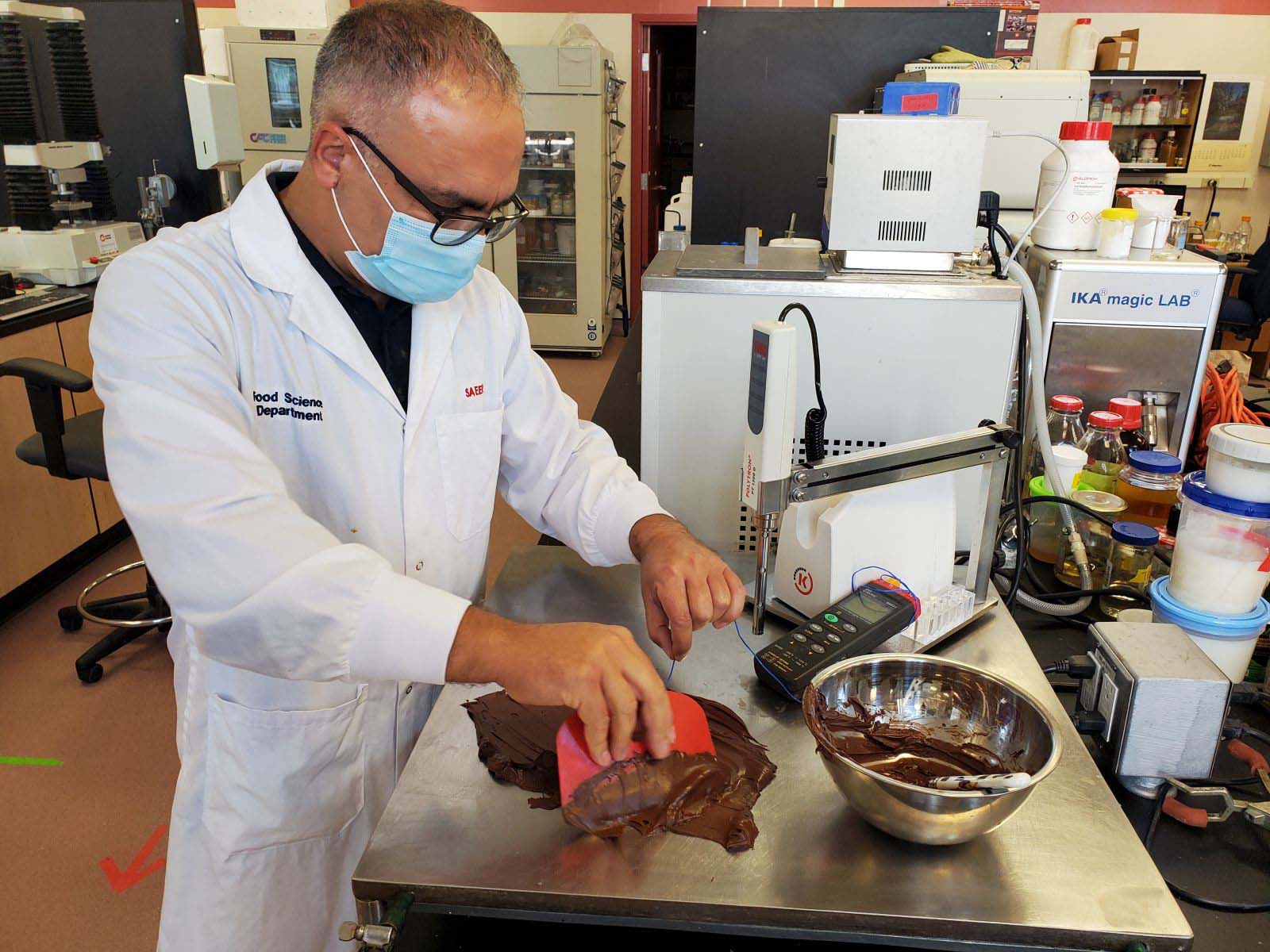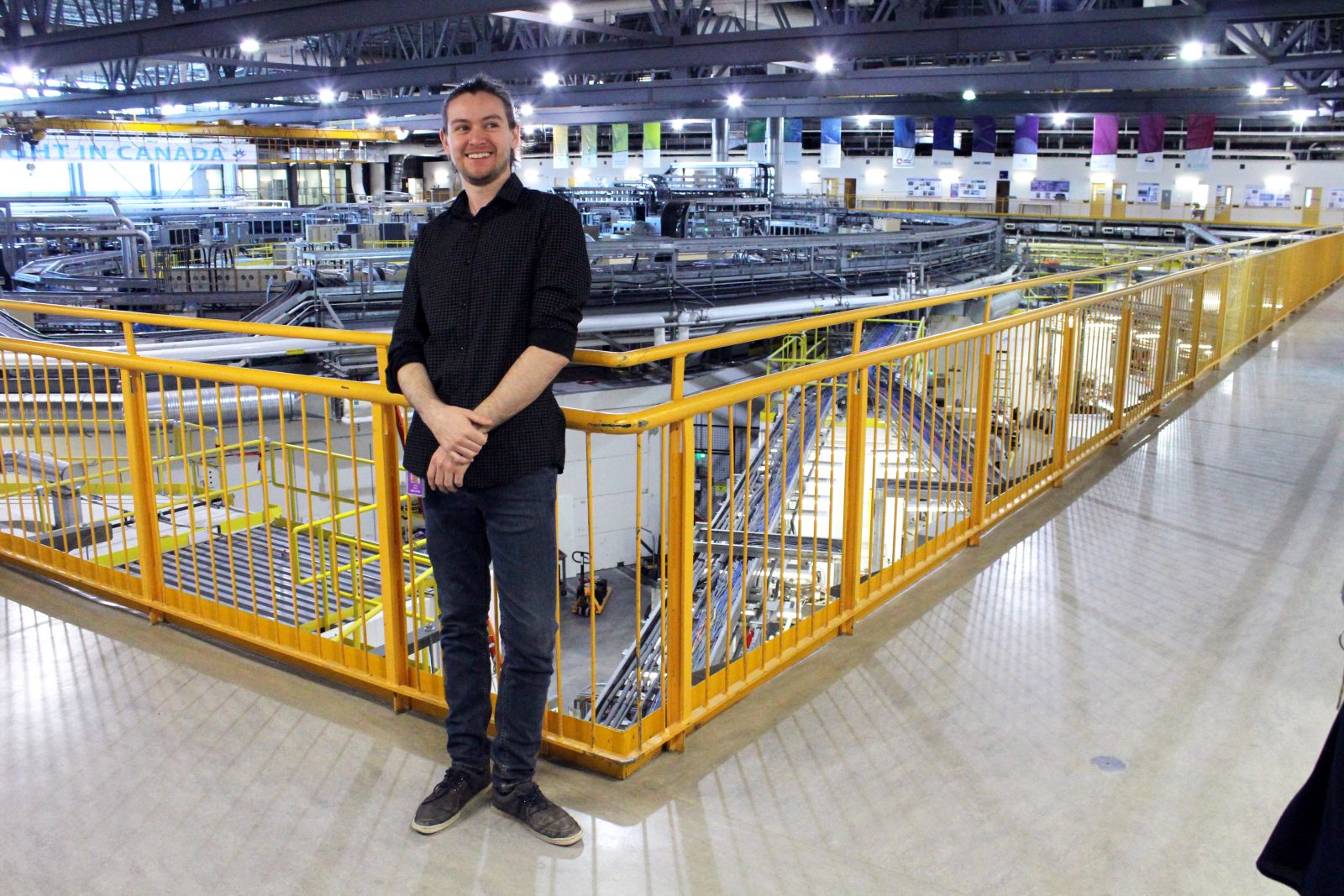Sweet results: Using science to make the best chocolate yet
Structure is key when it comes to creating the best quality of chocolate. An ideal internal structure will be smooth and result in glossy, melt-in-your-mouth decadence. However, this sweet bliss is not easy to achieve.
By Erin MatthewsChocolate preparation
Scientists used synchrotron technology to show a key ingredient can create the ideal chocolate structure and could revolutionize the chocolate industry.
Structure is key when it comes creating the best quality of chocolate. An ideal internal structure will be smooth and continuous, not crumbly, and result in glossy, delicious, melt-in-your-mouth decadence. However, this sweet bliss is not easy to achieve.
Researchers from the University of Guelph had their first look at the detailed structure of dark chocolate using the Canadian Light Source (CLS) at the University of Saskatchewan. Their results were published today in Nature Communications.
“One of the major problems in chocolate making is tempering,” said Alejandro Marangoni, a professor at the University of Guelph and Canada Research Chair in Food, Health and Aging. “Very much like when you temper steel, you have to achieve a certain crystalline structure in the cocoa butter.”

Skilled chocolate makers use specialized tools and training to manipulate cocoa butter for gourmet chocolate. However, Marangoni wondered if adding a special ingredient to chocolate could drive the formation of the correct crystal structure without the complex cooling and mixing procedures typically used by chocolatiers during tempering.
“Imagine if you could add a component that directs the entire crystallization process to a high-quality finished product. You wouldn’t need fancy tempering protocols or industrial machines — you could easily achieve the desired crystalline form just by the addition of this component,” Marangoni said.
His team went to the CLS to see if their secret ingredient, a specific phospholipid, could drive the formation of an ideal chocolate structure. The facility’s bright light, which is millions of times brighter than the sun, allowed the team to get images of the interior structure of their dark chocolate in exquisite detail.
“We have some of the most beautiful micrographs of the finished chocolate that were only possible because we did this work at the CLS,” said Marangoni.

In a world first, the researchers were able to get detailed imaging of the internal structure of dark chocolate, thanks to the synchrotron's state of the art BMIT beamline.
“Working with the CLS, I would call it a next level interaction,” Marangoni added. “It was extremely easy to set up a project and we had enormous support from beamline scientists.”
In collaboration with CLS Plant Imaging Lead Jarvis Stobbs, Marangoni and colleagues were able to confirm the positive effect their ingredient had on obtaining the ideal structure for chocolate.
“We screened many minor lipid components that would naturally be present in chocolate and identified one preferred group. We then added a very specific molecule, a saturated phospholipid, to the chocolate mass and obtained the desired effect. This phospholipid formed a specific liquid crystal structure that would ‘seed’ the formation of cocoa butter crystals,” said Marangoni.
Their discovery that this phospholipid ingredient will drive the formation of ideal cocoa butter crystals could have a big impact on the way that chocolate is made.
“It could potentially revolutionize the chocolate industry, because we would not need very complex tempering machines,” Marangoni said. “This could open up the possibility for smaller manufacturers to produce chocolate without having the big capital investment for tempering machinery.”
Synchrotron research allows scientists to identify important details that are not possible to find with other techniques. Marangoni said that any small improvement on current manufacturing methods can have a very large impact on the food industry and can potentially save money for companies.
He added that while chocolate research pales in comparison to global problems, he emphasizes the impact food can have on our everyday lives.
“We have more serious problems like climate change and alternative energies and maybe even vegan foods, which we're working on as well, but chocolate gives us that psychological pleasure. It's one of these foods that makes us feel happy.”
To arrange an interview, contact:
Victoria Schramm
Communications Coordinator
Canadian Light Source
306-657-3516
victoria.schramm@lightsource.ca
